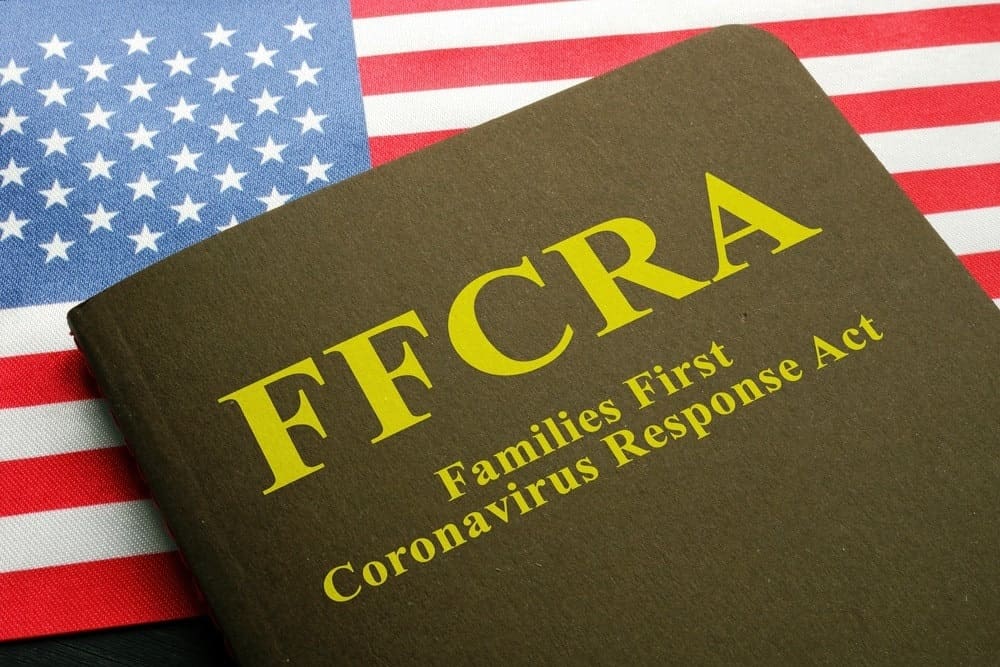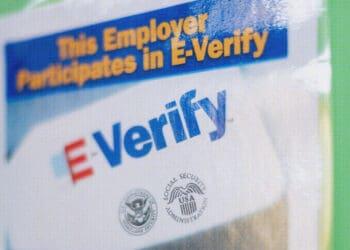The IRS will likely require employers to separately report FFCRA family and sick leave payments on W-2 forms. Depending on how employers keep those records, this may be a major record-keeping issue. Pete Isberg explains.
The global crisis initiated by COVID-19 has created unparalleled concerns regarding our safety and well-being. Public health is at the forefront of every consideration we make in 2020 – businesses and their employees, as well. A study from the U.S. Census Bureau suggests just over half of respondents believe this pandemic will last well into 2021 before we see any sort of return to normalcy in our day-to-day lives.
Companies are now forced to balance a global pandemic affecting business and the well-being of their employees, along with being aware of certain new rules and regulations they need to comply with. One example is the new reporting requirements associated with the Families First Coronavirus Response Act (FFCRA). The FFCRA was enacted March 18, 2020 to require employers with less than 500 employees to provide paid family and sick leave to employees affected by COVID-19 and to provide affected employers with a corresponding employment tax credit covering 100 percent of the cost.
Employers began paying FFCRA leave wages and applying the tax credits to their payroll taxes in April, but it was not until July that the IRS announced, in Notice 2020-54, that employers would need to report qualified sick leave wages and qualified family leave wages separately, by type, on all 2020 Forms W-2, or in a separate statement.
This reporting requirement compounds other tax compliance issues companies must consider under new COVID guidance. There are three types of paid family or sick leave employers with fewer than 500 employees should report separately on Form W-2, Box 14:
- Sick leave wages, up to $511 per day and $5,110 in the aggregate, because a sick employee requires care for the following reasons:
- They are subject to a federal or state mandated quarantine or isolation order specifically related to COVID-19.
- The employee has been advised by a health care provider to self-quarantine, likely as a result of being exposed to someone known to have COVID-19 or if they’ve visited a COVID-19 hot spot.
- They are experiencing symptoms related to COVID-19 and are in the process of seeking medical guidance.
- Sick leave wages, up to $200 per day and $2,000 in the aggregate, because an employee is providing care to a family member or other person in their life requiring care. It applies in the following cases:
- An employee caring for an individual subject to quarantine or isolation orders related to COVID-19.
- Someone caring for another person who has been advised by a health care provider to self-quarantine.
- If they are caring for a child because a school is closed due to COVID-19.
- When a parent or guardian is caring for a child because a child care provider is closed or unavailable due to COVID-19.
- The person is experiencing substantial or similar conditions specified by the Department of Health and Human Services.
- Expanded family leave wages, up to $200 per day and $2,000 in the aggregate, at two-thirds an employee’s rate of pay. This is directly applicable for those with children with closed or unavailable schools or child care options, and the employee is unable to work remotely because they are caring for the child or children.
The IRS notice explains that the purpose of this reporting is to provide employees who may also have self-employment income with the information they need to properly claim any qualified sick or family leave credits for which they are eligible. This distinct reporting can cause extra work for many employers, but it’s important to take note of these guidelines and address them in order to enable employees to properly claim qualified sick leave or qualified family leave tax credits under the Families First Act.
Employers should also use the correct language and terminology when informing employees of their rights and what they qualify for under the FFCRA. Employers should also let employees know that wages associated with sick or family leave may limit the amount of credits the employee is entitled to with regard to any self-employment income. The following language can be used as a model, and may be modified as needed:
“Included in Box 14, if applicable, are amounts paid to you as qualified sick leave wages or qualified family leave wages under the Families First Coronavirus Response Act. Specifically, up to three types of paid qualified sick leave wages or qualified family leave wages are reported in Box 14:
- Sick leave wages subject to the $511-per-day limit because of care you required;
- Sick leave wages subject to the $200-per-day limit because of care you provided to another; and
- Emergency family leave wages.
If you have self-employment income in addition to wages paid by your employer and you intend to claim any qualified sick leave or qualified family leave equivalent credits, you must report the qualified sick leave or qualified family leave wages on Form 7202, Credits for Sick Leave and Family Leave for Certain Self-Employed Individuals, included with your income tax return and reduce any qualified sick leave or qualified family leave equivalent credits by the amount of these qualified leave wages.”
The FFCRA sick and family leave and the associated tax credits are only in effect through December 2020, but the IRS and Department of Labor will both actively enforce the requirements. It may be timely to review the law and ensure that each element is being observed and appropriately offered and explained to employees.
The IRS was quick to instantiate regulations around how employees could earn wages during leave as it relates to COVID-19, and employers should expect them to react just as swiftly once shutdowns ease and normalcy returns. We can all speculate on when that may be, but it’s likely the end will feel as swift as the beginning of this crisis. Communicating with employees directly and thoroughly now allows for an easier discussion later when these benefits end.



 Pete Isberg is Vice President of Government Relations at Automatic Data Processing, Inc., where he manages legislative and regulatory affairs, covering a wide variety of employment administration and compliance matters and related legislative trends and initiatives. He has over 30 years of experience in working with state legislatures and Congress, as well as the IRS and state tax authorities, state Departments of Labor and Employment Security, child support enforcement and municipal tax agencies concerning employment-related reporting, tax administration, withholding, wage & hour laws and similar issues.
Pete also serves as President of the National Payroll Reporting Consortium, a nonprofit trade association whose member companies provide payroll processing, employment tax filing and related services to more than two million U.S. employers, representing over 36 percent of the private sector workforce.
He is a former member of the IRS Information Reporting Program Advisory Committee (IRPAC) and is recognized by senior U.S. Treasury officials and Congressional tax-writing committees as an authority on payroll and employment tax administration.
He holds an MBA in Finance from California State Polytechnic University.
Pete Isberg is Vice President of Government Relations at Automatic Data Processing, Inc., where he manages legislative and regulatory affairs, covering a wide variety of employment administration and compliance matters and related legislative trends and initiatives. He has over 30 years of experience in working with state legislatures and Congress, as well as the IRS and state tax authorities, state Departments of Labor and Employment Security, child support enforcement and municipal tax agencies concerning employment-related reporting, tax administration, withholding, wage & hour laws and similar issues.
Pete also serves as President of the National Payroll Reporting Consortium, a nonprofit trade association whose member companies provide payroll processing, employment tax filing and related services to more than two million U.S. employers, representing over 36 percent of the private sector workforce.
He is a former member of the IRS Information Reporting Program Advisory Committee (IRPAC) and is recognized by senior U.S. Treasury officials and Congressional tax-writing committees as an authority on payroll and employment tax administration.
He holds an MBA in Finance from California State Polytechnic University.










